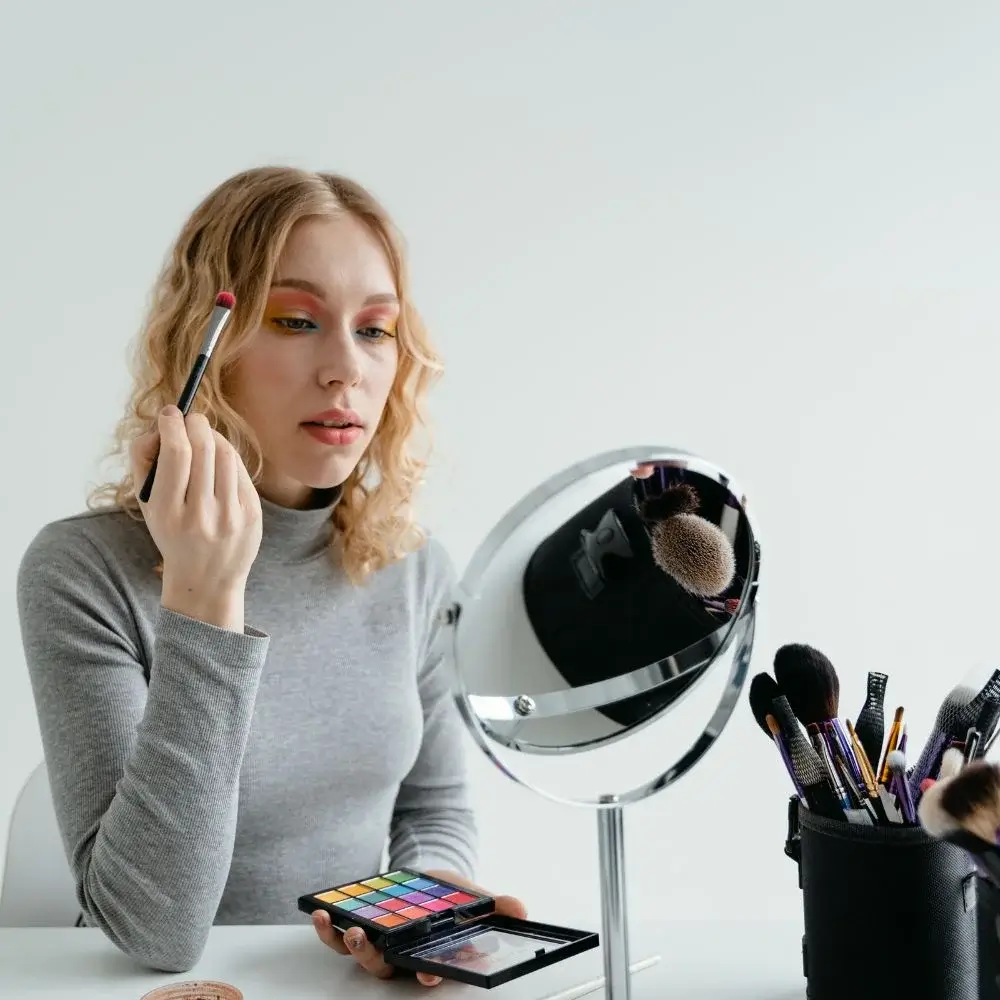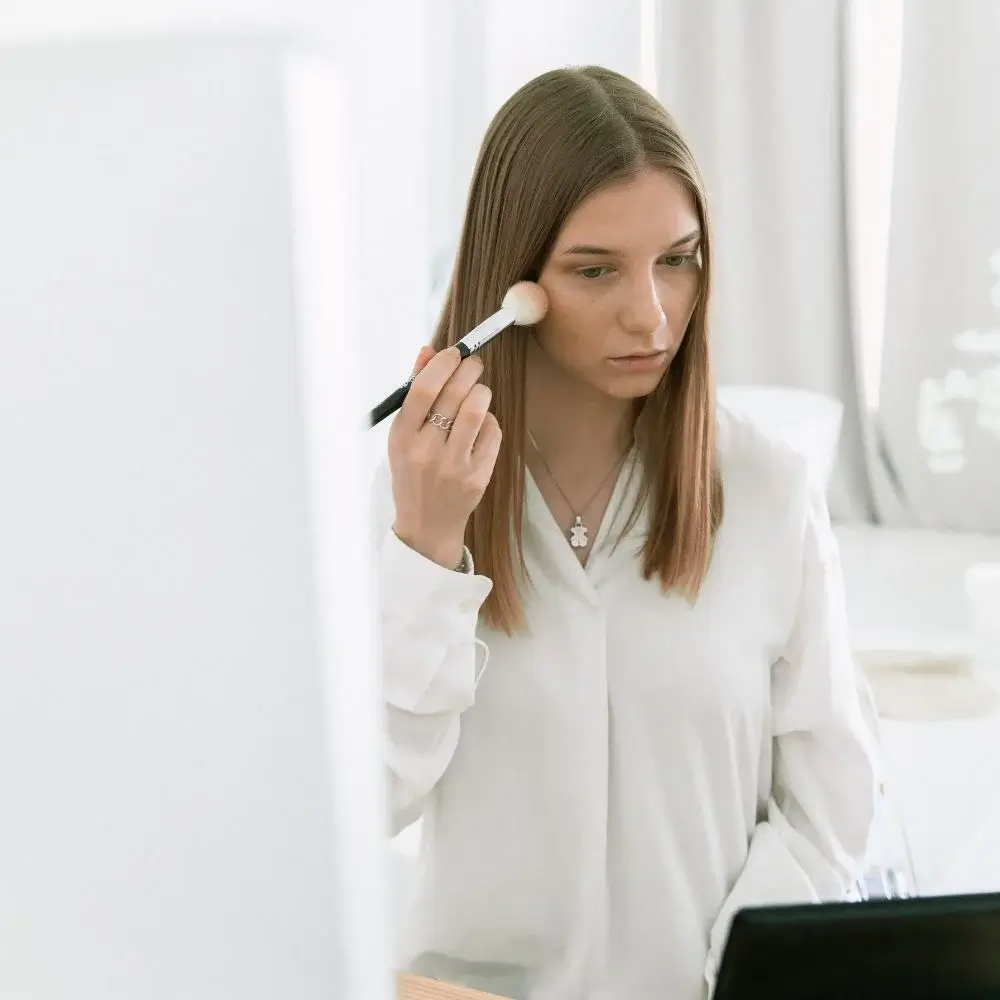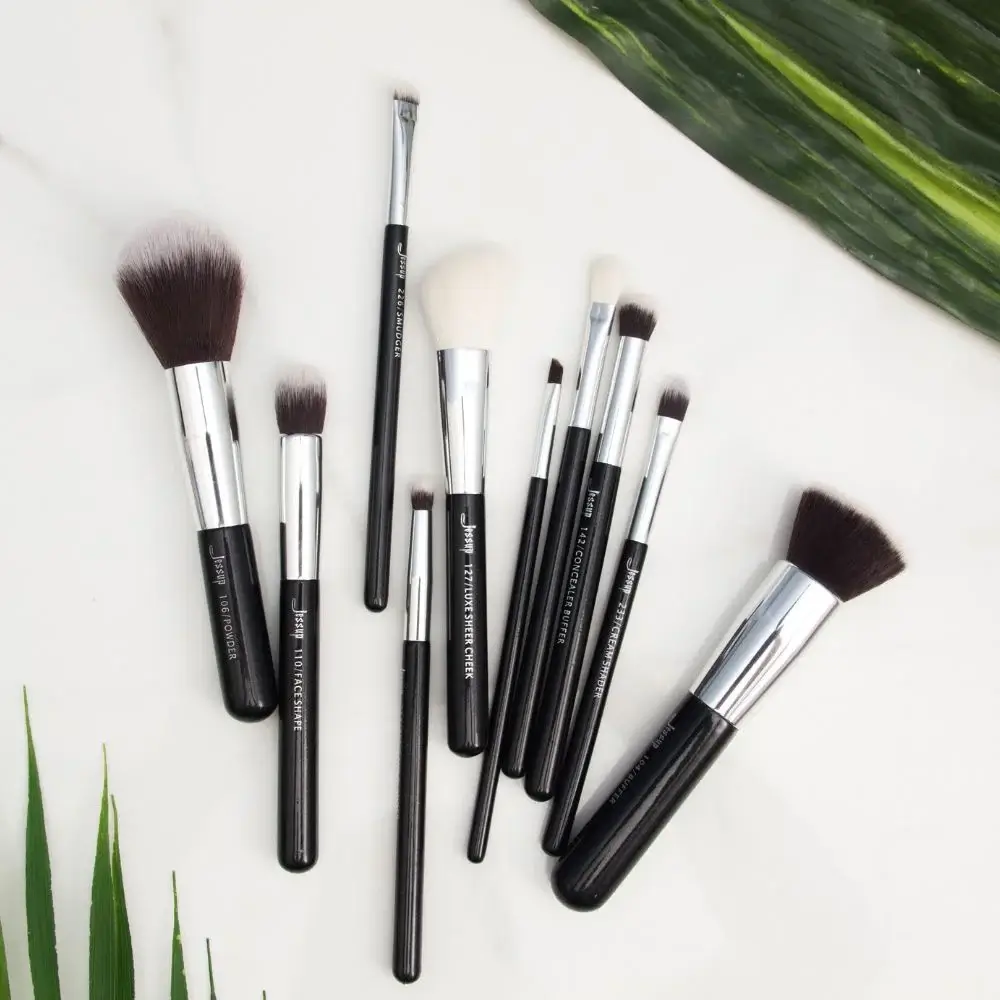For fashion lovers, makeup is an essential component of their daily routine. And using quality makeup brushes can make all the difference in achieving a flawless look. However, with so many different types of brushes and techniques out there, it can be overwhelming to know where to begin. This guide is here to help! Whether you’re a makeup novice or a seasoned pro, we’ve got you covered with all the information you need on how to use makeup brushes.
Start with the essentials:
The first step to using makeup brushes is ensuring you have the right ones. The essential brushes you’ll need include a powder brush, a foundation brush, an eyeshadow brush, and a blush brush. A large, fluffy powder brush is perfect for applying loose or pressed powder to set your makeup. A foundation brush is perfect for applying liquid or cream foundation in a smooth and even way. An eyeshadow brush is ideal for applying color to your eyelids, and a blush brush is perfect for applying blush to the apples of your cheeks.
Learn the different brush types:
There are many different makeup brushes, each designed for a specific purpose. Learning about the different types of brushes can help you achieve the best results. For example, a stippling brush is perfect for applying cream blush because the bristles are long and flexible. A lip brush is great for applying lipstick and lip gloss to ensure precise application. And a fan brush is perfect for applying highlighter to the high points of your face.
Understand brush techniques:
Knowing how to use makeup brushes properly is just as important as having the right tools. When it comes to techniques, there are several things to remember. For example, when using a powder brush, you should use a light hand and apply the powder in circular motions. For foundation, start by applying small amounts of foundation to the center of your face and blend it outwards using a stippling, buffing, or bouncing technique. For blush, start at the apples of your cheeks and blend upwards towards your temples.
Learn proper maintenance:
Taking care of your brushes is essential to keep them in good condition and maintain their quality. To clean your makeup brushes, run them under warm water and add a small amount of gentle soap. Work the soap into the bristles and rinse thoroughly until the water clears. Gently squeeze out excess water and reshape the bristles. Lastly, let them air dry on a flat surface.
Invest in quality brushes:
Investing in quality makeup brushes is essential for achieving a perfect look. Not only will they last longer, but they’ll also perform better. When shopping for brushes, look for ones with soft, densely-packed bristles that feel gentle on your skin. While it might be tempting to buy cheaper brushes, investing in high-quality ones will pay off in the long run.
Using makeup brushes is not as complicated as it seems, but it does require some knowledge and practice. With these tips, you can use makeup brushes like a pro and achieve a flawless look quickly. Remember to start with the essentials, understand brush types and techniques, learn proper maintenance, and invest in quality brushes. By doing so, you’ll be well on your way to flawless and stunning makeup looks!
Finding the perfect makeup brushes can be daunting, but once you've done the research and found the ones that work best for you, it can make all the difference in your makeup routine. With so many options and brands out there, investing in quality brushes that will last and help you achieve your desired look is essential. Luckily, we've got you covered with a link to some of the best makeup brushes on the market. Whether you're a makeup veteran or just starting to build your collection, click that link and find your new favorite set of brushes today!
What is the best material for makeup brush handles?
Selecting the most suitable material for makeup brush handles involves weighing various factors. Hardwood and bamboo are considered environmentally responsible choices, providing durability and a natural aesthetic. In contrast, synthetic materials offer affordability and come in various designs. Choosing a material that feels comfortable in your hand, aligns with your values, and complements your style is essential.

What are the best makeup brushes for blending and smudging?
Achieving impeccable blending and smudging in your makeup routine requires selecting the right brushes. A fluffy blending brush with natural bristles is the go-to choice for blending eyeshadows or softening lines. The softness of the bristles ensures seamless blending. Conversely, a smudging brush with dense synthetic bristles for crafting a dramatic smoky eye allows for precision and control. These brushes facilitate expert-level blending and smudging techniques, elevating the allure of your eye makeup and making it an art form.

What are the top tips for extending the lifespan of makeup brushes?
Ensuring the longevity of your makeup brushes demands a combination of care and maintenance. Regularly clean your brushes with a gentle brush cleaner or mild soap to prevent product buildup and bacterial growth. Avoid soaking the brush handles in water, as this can weaken the adhesive that holds the bristles in place. Storing your brushes in a well-ventilated area is essential to promote proper drying and prevent mildew. Gentle handling minimizes bristle damage and shedding.

How do I clean the foundation residue from my makeup brushes?
Cleaning foundation residue from your brushes is essential to maintain their performance and hygiene. To do this effectively:
- Begin by wetting the brush's bristles with warm water.
- Gently lather the bristles with a dedicated makeup brush cleaner or a mild soap.
- Thoroughly rinse the bristles, ensuring the water runs clear.
It's important to avoid soaking the brush handle. After cleaning:
- Gently pat the brush dry with a clean towel.
- Reshape the bristles to their original form.
- Allow them to air dry completely.

How do I determine the best brush size for contouring?
Choosing the ideal brush size for contouring is contingent on your face shape, the level of precision you desire, and the makeup style you aim to achieve. Generally, a smaller, tapered brush excels in precise contouring, allowing you to sculpt specific areas accurately. In contrast, a larger, fluffy brush is better suited for achieving a softer, more diffused contour. Experimentation is vital to finding the brush size that complements your facial features and personal style, ensuring that your contouring efforts consistently yield stunning, well-defined results.
Should I use a setting spray after applying makeup with brushes?
Incorporating a setting spray into your makeup routine as the final step offers numerous benefits. This product helps set your makeup, prolonging its wear and ensuring it remains in place throughout the day. It effectively resists smudging, fading, and the effects of environmental factors. After applying makeup with brushes, mist the setting spray over your finished look, holding the bottle a few inches from your face. This not only enhances the longevity of your makeup but also imparts a refreshing finish, aiding in achieving a flawless, long-lasting appearance that stays impeccable even under challenging conditions.







